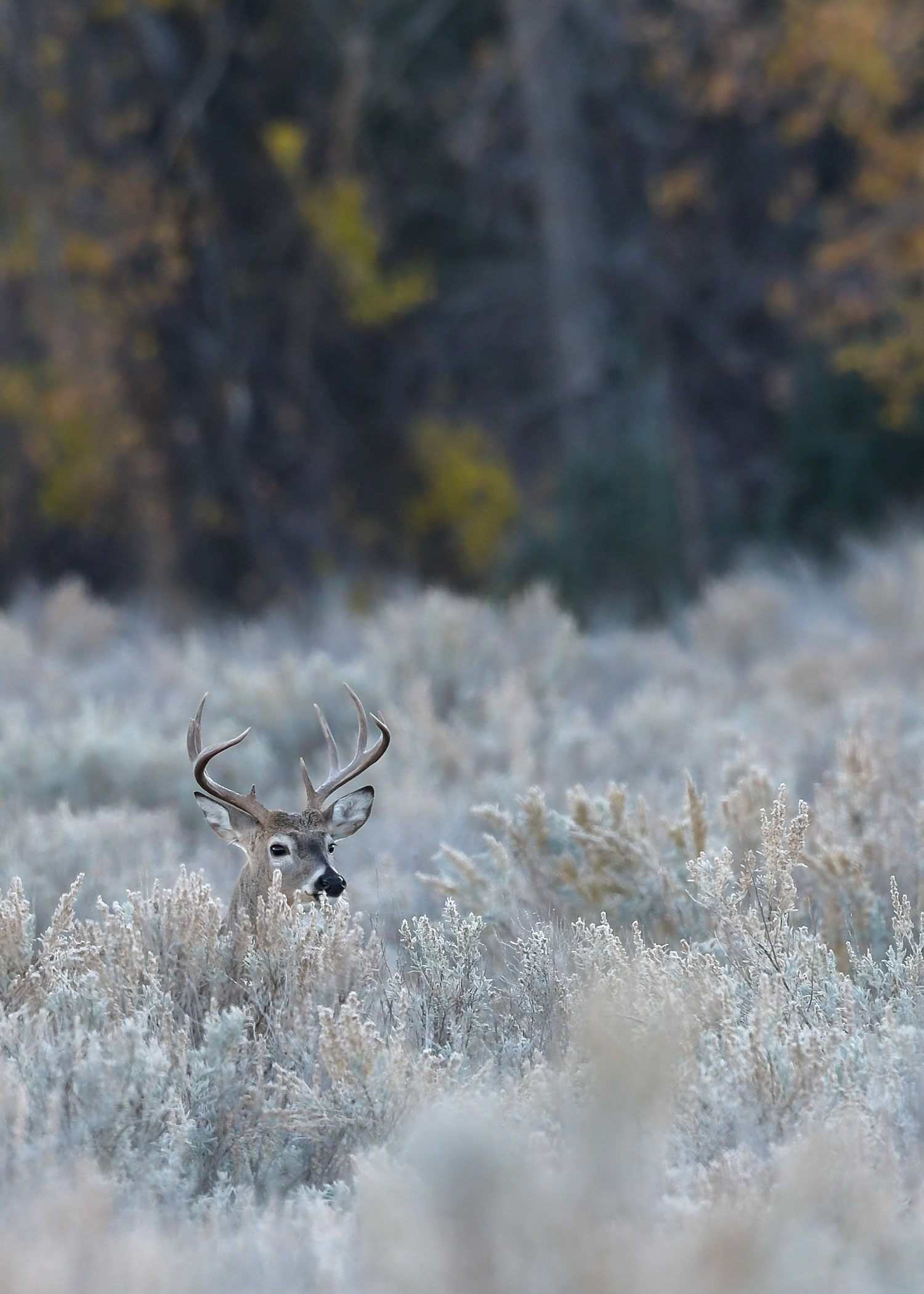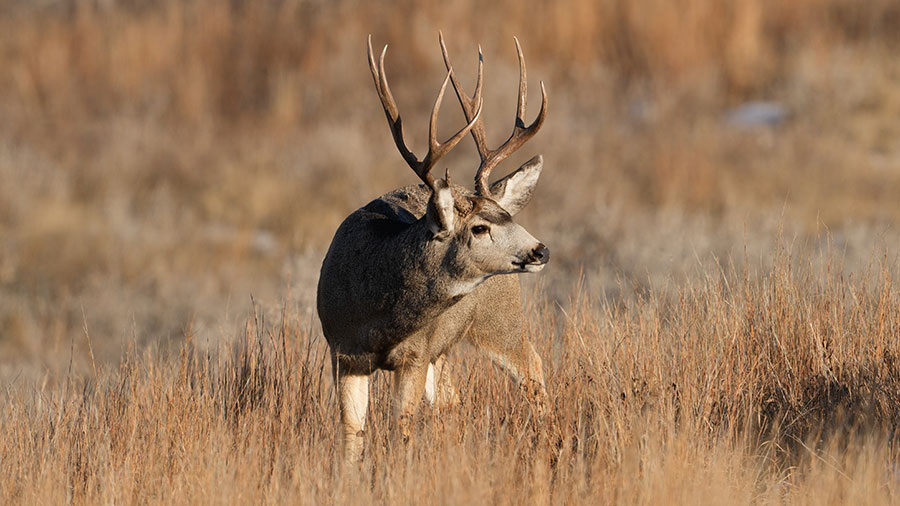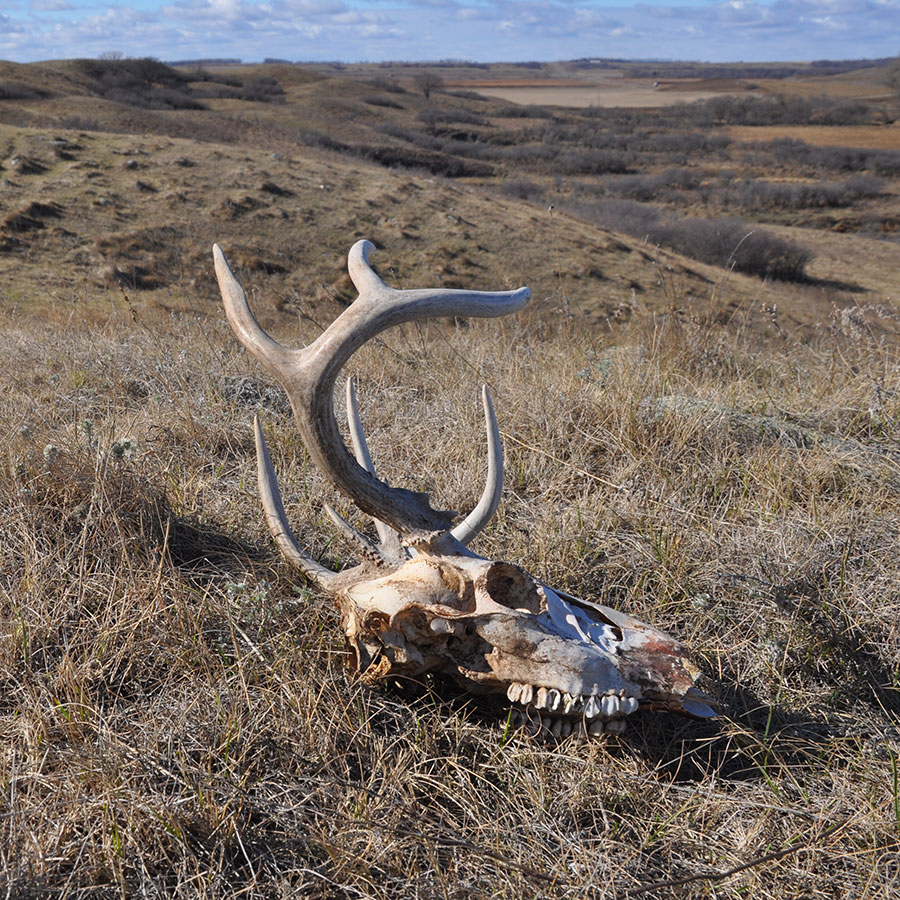Ups and Downs in Deer Country
Ron Wilson

I’ve been writing about deer and deer hunting since 2003 for the Game and Fish Department, long enough that I don’t have to look up how to spell epizootic hemorrhagic disease.
Like EHD, caused by a biting midge that has been hard on deer over the years, life on the Northern Plains for deer and deer hunters for the last 20-plus years has been somewhat of a roller coaster.
From the days — 2001 through 2011 — when the Department made available more than 100,000 licenses per gun season to today’s allotment of just 42,300 tags, the extremes are telling.
With respect to the deer gun season opening in November, which has been the one constant over the years, what follows are snippets from North Dakota OUTDOORS over the last two-plus decades, the odds and ends that help tell the story of our most celebrated hunting season and the animals that garner so much of our attention for 16 1/2 days.
2003
In many hunting units in the state today, biologists can conservatively estimate the buck-to-doe ratio at one buck to two adult does. Which is a good thing, at least where it’s true, because scientists figure that the females are getting bred at roughly the same time of year, thus optimizing reproductive potential and the promise of survival.
The 2-to-1 ratio hasn’t always been the case in North Dakota. One of the reasons the Department went to a unitized deer hunting system in 1975 was that bucks in some parts of the state were getting overharvested. Which meant that some does, because of a lack of suitors, weren’t getting bred in November, but as late as January.
“This late breeding resulted in the does having fawns not until August instead of June,” said Bill Jensen, North Dakota Game and Fish Department big game biologist. “Deer born as late as August go into the upcoming winter too small, reducing their odds of survival. The fawns that are born late are going to be the first ones coming into farms to feed in the winter and are going to be getting into trouble.”

2004
A shot hasn’t even been fired, and this fall’s deer season has already been dubbed historic by some. And rightly so, at least in terms of the number of licenses — an all-time high 145,250 tags — made available to gun hunters.
That number is certainly celebrated when you review the history of deer hunting in North Dakota. During a 22-year stretch starting in 1931, for example, deer camps were empty 10 times. The last time there wasn’t a deer season in the state was 1953 – an unfathomable occurrence that would give today’s most ardent hunters the shakes.
There’s no question: The good old days are today.
2017
To many of today’s hunters, the North Dakota Game and Fish Department’s peel and stick deer tags are as conventional as, say, fluorescent orange hunting gear.
Give or take a few years, both have been standards with the deer hunting ranks for roughly 40 years.
Before today’s peel and stick tags, hunters in North Dakota tagged harvested deer with metal locking seals. What remains somewhat of a mystery is exactly when Game and Fish employed this type of tag.
2018
While the statewide deer population remained relatively stable through the 1960s and early 1970s, Department biologists noted a marked increase in the number of buck-only licenses sold. Changes were necessary because biologists felt whitetail bucks were being overharvested in parts of the state.
The Game and Fish Department first began issuing buck-only licenses via lottery in 1975. Prior to that, hunters could buy a buck license straight from licenses vendors up until noon on the opening day of the deer season. These buck licenses were not limited in number.
2019
Considering the whims of Mother Nature, changes in the landscape, rising and falling deer populations, deer hunter expectations and differing landowner tolerance levels, managing deer in North Dakota isn’t easy.
North Dakota Game and Fish Department wildlife managers certainly understand this. They also recognize the enormity of the task because many North Dakotans have a vested interest in a celebrated outdoor activity that seemingly takes so long to get here but is over before you know it.
2020
2022
In 2021, amid significant drought conditions that hamstrung much, if not all, of the state, the Game and Fish Department received its first report on Aug. 1 of deer dying from epizootic hemorrhagic disease near Mandan.
And reports of the fallout of the naturally occurring virus spread by a biting midge that is often fatal to white-tailed deer, and less commonly to mule deer, pronghorn and elk, continued to pour in to Game and Fish for many weeks thereafter.
“I’m going to temper my strong statement, but it’s safe to say the EHD outbreak in 2021 is on par with the worst year that we’ve witnessed in terms of EHD attributed mortality,” Bahnson said. “Devastating is probably a good word for it.”
2022
Mule deer have sort of a distinctive gait where when alarmed they bounce across the landscape. It’s called stotting, a Scottish term for bounce. Whereas whitetails just tend to have an all-out, bolt run.
Jensen said there’s some evidence that stotting is a signaling mechanism for young or other members of the family group that there’s danger nearby. There are other theories, too, that it’s a better means of traveling across the landscape and being able to get above the vegetation and see. But that’s yet to be determined, he added.
2022
An always fatal disease to deer and other cervids that has found some footing in North Dakota, yet has a smaller footprint compared to some other states, will forever remain on the landscape. The reality of this, the certainty that chronic wasting disease is going nowhere and has the potential to significantly impact our big game populations if left unchecked, is sobering.
2023
There are multiple generations of North Dakotans that don’t have any idea it was a rarity at one time in North Dakota to see a whitetail deer outside of your traditional riparian areas. Not that long ago if you saw a whitetail running around, it was something you told your neighbor, said Jason Smith, Department big game management biologist.
“We’ve got to remember that we are on the Northern Plains and winter at times can be a pretty big equalizer no matter what we do,” he said. “We’re lucky to have deer where we have them, but it’s not surprising that they run into the struggles that they do.”
2024
When I moved to North Dakota nearly 40 years ago, I felt as green as that 12-year-old sitting on a stump. I’d never seen a white-tailed deer before. I didn’t know where the deer hid for the lack of trees, didn’t know how people hunted them, was quick to learn that I couldn’t just buy a deer license over the counter but had to apply, and not only was it mandatory to wear fluorescent orange during the season but fashionable in a way to wear around town when the season was in swing or not.


